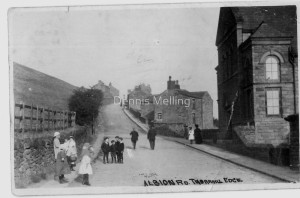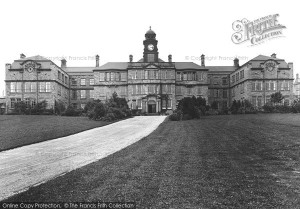May Owen (b.1896): Education and Schooling
Much of May Owen’s life revolved around schools and education with half of her autobiography giving detail to her life in the education system. She stayed in school until the age of 18 and was then accepted into a teacher training course. Eventually, after her time in the Land Army, she took on a teaching  position where she worked for three years.
position where she worked for three years.
Owen ‘was a smart well educated woman’ (p.8). At the age of nine she passed a scholarship ‘which gave [her] mother £6 a year and sent [her] to [her] first secondary school.’(Owen, p.3) This is extremely rare as it wasn’t until 1913 that thirteen year olds had to stay in compulsory education and yet working class children were still taken out of school to do seasonal work or help look after the house and younger siblings if they were girls. The year Owen spent at this secondary school that she mentions is described as ‘wonderful’ (p.3). She was able play hockey with her friends once a week but after the twelve months she ‘travelled up to Sheffield to join [her] father’ (p.3)
In Sheffield, Owen attended the village church school. Her experience at this school was not as ‘wonderful’ as her previous one; Owen became very unpopular as she didn’t understand the cultures of the colliery village so the girls took a disliking towards her.
At the age of eighteen Owen passed her ‘Cambridge local which entitled [her] to a training college’ (p.6) but Owen ‘hated the thought of teaching’ (p.6) so she packed up and went to North Wales where she joined the Land Army. Eventually Owen returned home and ‘went to Bingley for 2 years to train to please [her] mother’ (p.6)
Owen talks about the difference in students today and students of her time, ‘the grants and life. What a difference’ (p.7). However with the Public teacher system of 1846 the government started to give small grants to schools although this was used towards teachers and not the pupils paying any fees which Owen made to pay for when she attended.
Owen taught ’58-60 children […] the discipline was excellent. At the end of the year, the juniors could write nicely, add up […] and read with few exceptions.’ (p.7) By the time that Owen was a teacher the literacy rates would have improved by miles but from Owen’s comment that there were ‘few exceptions’ shows that there was still room for progression.
Bibliography
May, Owen. Autobiographical Letter. Burnett Archive of Working Class Autobiography, University of Brunel Library, Special Collection, 2:576
Pictures:
Bingley Teacher Training College, http://www.francisfrith.com/bingley/bingley-the-college-1926_79087
Chapel School, Yorkshire, http://www.redbubble.com/people/zipac/works/7533377-chapel-school-thornhill-yorkshire-19th-century

Leave a Reply